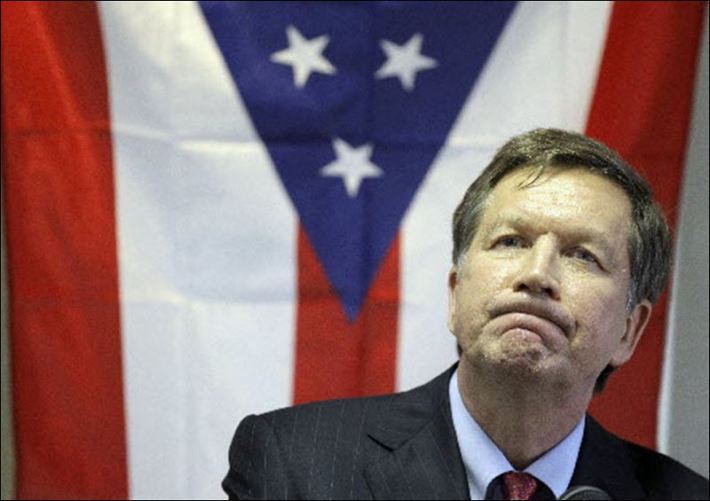Of all the anti-transit zealots in office right now, Ohio Governor John Kasich really stands out from the rest.
His first notable action as governor was to return $400 million in federal dollars for passenger rail between Cincinnati, Columbus and Cleveland. But as we all know, he wasn't the only governor to take the opportunity to make a political statement at his constituents' expense.

Kasich took it further. In what Jon Stewart has referred to as Kasich's "special blend of dickishness," he dismissed project supporters as being part of a "train cult." Then he appointed a former asphalt industry lobbyist to run the Ohio Department of Transportation.
Even given all that, however, his latest move is pretty brazen. The governor has zeroed in on the state's most high-profile transit project: the Cincinnati streetcar. And he has launched an unprecedented campaign to bring it to a screeching halt.
In his zeal to destroy the project, John Kasich actually had a rider inserted into the state budget that prevented any state money from being used on the Cincinnati streetcar. It's not exactly clear that the state has the legal authority to single out a municipality in order to deny funding in this way. Some observers have speculated that this will leave the state vulnerable to litigation.
"Kasich came in and just started canceling this stuff left and right," said Cincinnati blogger and transit activist Randy Simes. "He has a clear bend against transit."
On Tuesday, ODOT (led by "Asphalt Sheriff" Jerry Wray) went further still. The state board that is responsible for allocating transportation money -- TRAC -- stripped $51 million, or 100 percent, of the funding recommended for the Cincinnati Streetcar.
TRAC then continued to raid funding from transit projects around the state, in favor of highway expansion. It axed $7.1 million for a road diet in Cleveland and one of its inner-ring suburbs. It yanked funding for the Queensgate Terminal, a freight and Amtrak hub in Cincinnati. Then it awarded money to widen I-271 -- the spigot of job sprawl in suburban Cleveland.
But de-funding the Cincinnati streetcar was the most extraordinary decision of them all -- a complete reversal of TRAC's pre-Kasich position. The Cincinnati streetcar had been selected for funding by TRAC after it received the highest rating of any project on the docket (84 out of 100 points), based on a formula designed to "remove politics from the funding process."
David Rose, a spokesman for ODOT, said the funding changes were the result of "fiscal rebalancing." He said the state simply couldn't afford the $500 million it had promised; only $200 million in projects were awarded.
But that doesn't explain why the highest-rated project bore the brunt of the cutbacks, and despite repeated questioning, no one at ODOT has been able to adequately answer that question.
Following the decision, Cincinnati Mayor Mark Mallory said that TRAC had clearly lost its reason for being. (Mallory was a state representative when the agency was created.)
“This ... does nothing to help Ohio’s downtowns,” said Jack Shaner, deputy director of the Ohio Environmental Council. “It will only cart jobs and economic development to the exurbs and beyond. Steel rails, by contrast, are magnets that help keep downtown urban cores vibrant by attracting investment while reducing tailpipe emissions and raising the quality of life.”
Meanwhile, every major city in the state lost a significant portion of its population over the last 10 years, with the exception of Columbus.
Ironically, Kasich was just pontificating about how to make Ohio "cool" again -- although he didn't offer much by way of a plan.
Here's an idea, governor: How about supporting viable cities? The Cincinnati streetcar would be a marvelous place to start.





